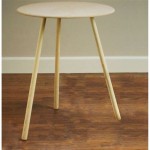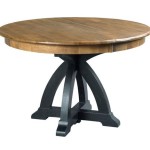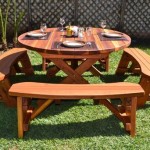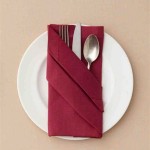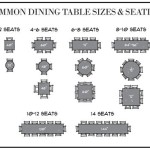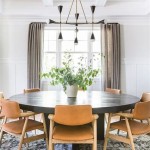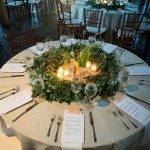The Question of Placemats on Tablecloths: Aesthetics, Functionality, and Etiquette
The setting of a table is an art form, a blend of practicality and presentation that elevates the dining experience. Within this art, the decision of whether to overlay placemats on a tablecloth is a common point of consideration. There is no absolute right or wrong answer; rather, the choice hinges on a confluence of factors, including the desired aesthetic, the level of formality, the practical needs of the occasion, and the types of materials involved. Understanding these considerations allows for a more informed and confident approach to table setting.
The use of a tablecloth itself is imbued with a sense of formality and tradition. It acts as a base layer, protecting the table surface from spills, scratches, and heat damage. A tablecloth can also contribute significantly to the overall décor, complementing the style of the room and the tableware. However, the addition of placemats introduces another layer of both functionality and visual interest. To determine the appropriateness of combining these two elements, a thorough examination of their individual roles and potential interactions is necessary.
Aesthetic Considerations: Balancing Layers and Visual Harmony
The aesthetic impact of layering placemats on a tablecloth is significant. It provides an opportunity to introduce contrast, texture, and visual depth to the table setting. The interplay between the tablecloth and the placemats can either enhance or detract from the overall appearance, depending on how carefully the materials, colors, and patterns are selected. For instance, a crisp white tablecloth paired with placemats in a bold color or intricate design can create a striking and contemporary look. Conversely, a subtly textured tablecloth might be complemented by placemats made of natural materials like jute or linen, adding a touch of rustic charm.
The choice of materials plays a crucial role in achieving visual harmony. A heavy, ornate tablecloth may be overwhelming when paired with equally elaborate placemats. In such cases, simpler placemats in a complementary color might be a better choice. Conversely, a plain tablecloth can serve as a blank canvas, allowing more elaborate placemats to take center stage. The dimensions of both the tablecloth and the placemats should also be considered. Oversized placemats on a small table, or placemats that are too small to adequately frame the place settings, can disrupt the balance and visual appeal of the arrangement.
The overall style of the event also influences the aesthetic decision. For formal occasions, a classic combination of a white linen tablecloth and elegant placemats, perhaps adorned with subtle embroidery or a delicate pattern, is often preferred. For more casual gatherings, a wider range of options is available, allowing for experimentation with different colors, textures, and patterns. Ultimately, the goal is to create a cohesive and visually pleasing table setting that reflects the tone of the occasion.
Functional Benefits: Protection and Practicality
Beyond aesthetics, the functional benefits of using both placemats and a tablecloth should be considered. A tablecloth provides a general layer of protection for the table surface, but placemats offer more targeted protection directly under plates and cutlery. They act as a barrier against spills, crumbs, and heat, further safeguarding the tablecloth from stains and damage. This is particularly important when serving messy or potentially staining foods.
The material of the placemat also contributes to its functionality. Placemats made of non-slip materials can help prevent plates and glasses from sliding, especially on smooth tablecloths. Heat-resistant placemats provide additional protection against hot dishes, preventing scorch marks and discoloration. Some placemats are also designed to be easily cleaned, making them a practical choice for everyday use. Vinyl or cork placemats, for example, can be quickly wiped clean with a damp cloth, while fabric placemats can be machine washed.
In certain situations, the layered approach offers a practical advantage in terms of maintenance. Instead of having to launder an entire tablecloth after a minor spill, only the placemat needs to be cleaned. This can save time and effort, especially for frequent gatherings. Furthermore, using placemats on top of a tablecloth can extend the life of the tablecloth by reducing the frequency of washing. The placemats absorb much of the wear and tear, protecting the underlying tablecloth from fading and damage.
Etiquette and Formality: Navigating Social Norms
The use of placemats on a tablecloth can also be influenced by considerations of etiquette and formality. Traditionally, a tablecloth was considered a staple of formal dining, while placemats were more commonly associated with casual settings. However, modern etiquette is more flexible, allowing for greater personal expression and adaptation to the specific event. The key is to ensure that the table setting is appropriate for the occasion and that it reflects a sense of intentionality and attention to detail.
For very formal events, such as weddings or state dinners, a full tablecloth is generally preferred, often without placemats. This creates a sense of elegance and grandeur that is consistent with the formality of the occasion. However, even in these settings, placemats may be used, provided they are of high quality and complement the overall aesthetic. For example, finely embroidered linen placemats could be used to add a touch of understated sophistication.
In less formal settings, such as dinner parties or family gatherings, the use of placemats on a tablecloth is perfectly acceptable and can even be encouraged. It allows for greater creativity and personalization, enabling the host to create a table setting that reflects their personal style and the theme of the event. The choice of placemats can also be used to signal the level of formality. For example, simple cotton placemats might be used for a casual brunch, while more elaborate beaded or woven placemats could be used for a sophisticated dinner party. The key is to strike a balance between formality and comfort, creating a welcoming and enjoyable atmosphere for guests.
Ultimately, the decision of whether to use placemats on a tablecloth is a matter of personal preference and practical consideration. By carefully weighing the aesthetic, functional, and social factors involved, individuals can make informed choices that enhance the dining experience and create a memorable and enjoyable table setting.
In addition to the above considerations, the specific design of the table itself can influence the decision. A table with a particularly attractive surface, such as a beautifully grained wood or a marble top, might be partially covered by a tablecloth, leaving some areas exposed and then using placemats to delineate individual place settings. This approach allows the beauty of the table to be showcased while still providing protection and adding visual interest. Alternatively, a runner could be used in conjunction with placemats to add a decorative element without fully covering the table. The runner can provide a central focal point and tie together the individual place settings.
The seasons can also play a role in the decision. Heavier fabrics and darker colors may be more appropriate for autumn and winter, while lighter fabrics and brighter colors may be preferred for spring and summer. The placemats can be changed seasonally to complement the tablecloth and the overall décor of the room. For example, woven placemats in warm earth tones could be used in the fall, while brightly colored floral placemats could be used in the spring. This allows for a dynamic and ever-changing table setting that reflects the changing seasons.
The Great Debate Placemats Or Tablecloths Which Are Better Lc Studios

How To Set The Table With Placemats

How To Use Placemats Ultimate Style Guide French Affair

How To Use Placemats Ultimate Style Guide French Affair

5 Ways To Decorate A Table With Runner Pottery Barn

7 Tips For Storing Your Table Linens

20 40 60 Etiquette Setting The Table Tone For Your Dinner Party

Should You Use Placemats With A Tablecloth Combinations Positioning Tips Tablecoversnow Com

5 Ways To Decorate A Table With Runner Pottery Barn

Can You Do A Square Tablecloth On Round Table With Runner Centerpieces For Home Dining Cloth Farmhouse Room
Related Posts

